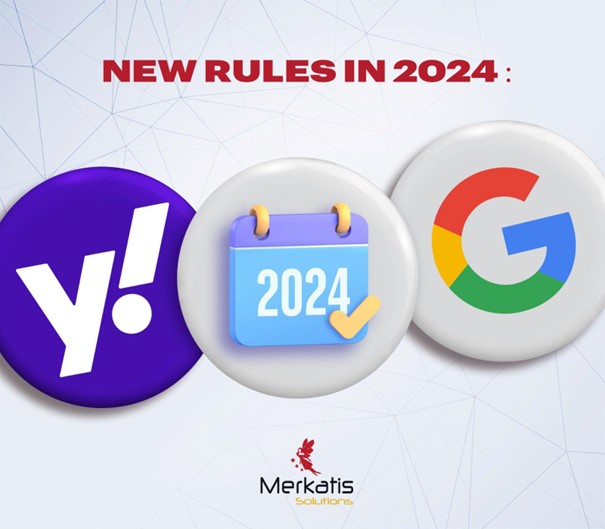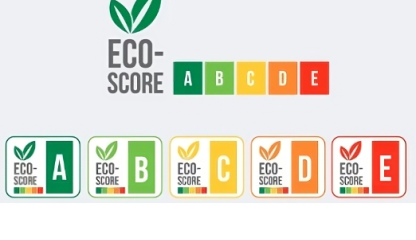Starting from February 2024, Gmail and Yahoo will implement new requirements for email senders. These measures aim to enhance inbox protection against spam while ensuring the delivery of legitimate emails.
Who will be affected by these new requirements?
Bulk senders, such as brands sending more than 5,000 emails per day, need to pay close attention to Gmail and Yahoo's new email sender requirements in 2024. Failure to comply with these guidelines can result in deliverability issues, compromising the ability to effectively reach contacts using these email services.
Here is a checklist to ensure your brand is in compliance with these new expectations:
- DO NOT USE GMAIL OR YAHOO EMAIL ADDRESSES IN YOUR 'FROM' FIELD
Avoid using Gmail or Yahoo email addresses in your 'From' field. If you currently use @gmail.com or @yahoo.com in the 'From' field of your emails, replace it with an email attached to the domain of the website you own.
To meet this requirement, you need to have an email address that includes your own domain. If you are a new brand and do not yet own your domain, it may be worthwhile to invest in one before February 1, 2024. You can purchase your own domain from any web hosting provider.
- SET UP A DEDICATED SENDING DOMAIN
Dedicated sending domains allow better control of your sender reputation and improve your brand image in the recipient's inbox by removing the "via klaviyomail.com" disclaimer.
Dedicated sending domains are an excellent deliverability practice and will be mandatory for mass senders regularly sending emails to users of Google and Yahoo mail services starting February.
Note that once your branded sending domain is activated, you will need to go through a slight warming-up period for your sending infrastructure during the following 2 to 4 weeks.
- CONFIGURE A DMARC RECORD IN YOUR DOMAIN'S DNS ZONE
DMARC authentication is a verification protocol that email services use to ensure emails come from a legitimate sender. Brands use DMARC policies to protect their sending domain from unauthorized use by malicious actors.
DMARC authentication is typically configured through your DNS server. It is recommended to set up your DMARC record with at least p=none in your domain's DNS zone.
- YOUR SENDER ADDRESS MUST MATCH YOUR SENDING DOMAIN
The 'From' field represents the sender's address visible to subscribers in their inbox, identifying the message sender (e.g., contact@testmerkatis.com). It is crucial that the sender address (contact@testmerkatis.com) matches your brand's sending domain (testmerkatis.com) to comply with DMARC protocol requirements. This rule applies to both marketing and transactional emails.
Ensure that all sender addresses in your emails and flows correctly correspond to your sending domain (testmerkatis.com).
- INCLUDE AN UNSUBSCRIBE LINK IN ALL YOUR EMAILS
One of the new requirements for senders is the inclusion of a one-click unsubscribe link in every email.
Your only responsibility here is to check all your emails before February to confirm the presence of an unsubscribe link, usually located in the email body (footer being the usual location). While it is not required for this link to be accessible in one click, it must be clear, unambiguous, and easily accessible to meet this new requirement.
- MAINTAIN A LOW SPAM RATE
This requirement is universal and has always been a good practice. Maintaining a low spam rate (<0.05%) remains the best approach to demonstrate to email services that you are a legitimate sender adhering to optimal deliverability standards.
Ensure to monitor deliverability indicators and explore Google Postmaster Tools features to assess your sending strategy's compliance with Google's requirements. This will help you maintain a strong sender reputation and maximize the deliverability of your messages.
In conclusion, Gmail and Yahoo's new email sender requirements for 2024 underscore the crucial importance of authentication, security, and transparency in electronic communications. For all senders, especially brands sending significant email volumes, it is imperative to adhere to these guidelines to ensure optimal deliverability.
The provided checklist offers a valuable guide to ensure every aspect of your sending strategy aligns with these new expectations. From verifying sender addresses to adhering to security standards and responsibly managing subscriber lists, every detail matters to maintain a positive sender reputation.



